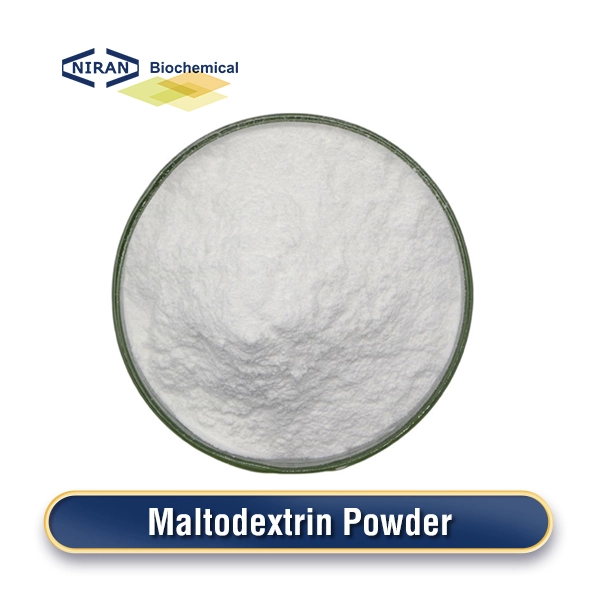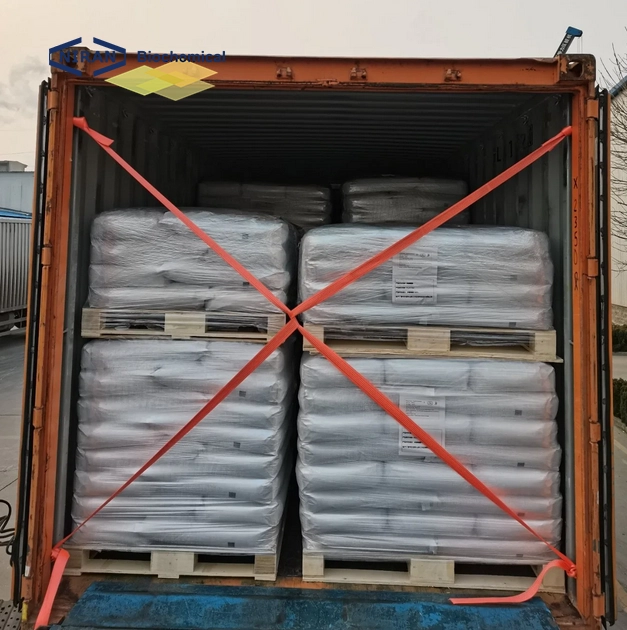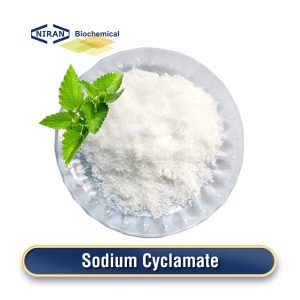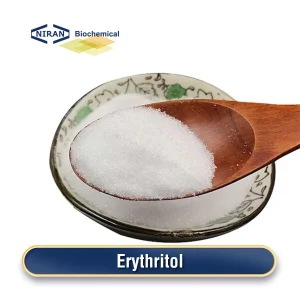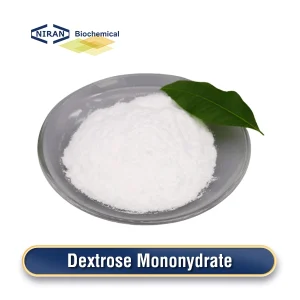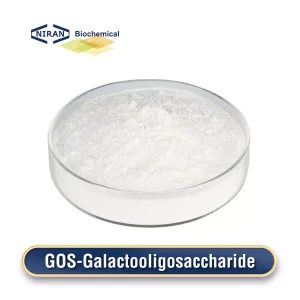Niran Biochemical
YOUR RELIABLE FOOD INGREDIENTS
Send Inquiry
Home » Products » Sweeteners » Maltodextrin Powder
Maltodextrin Powder
- CAS: 9050-36-6
- Chemical Formula: (C6H10O5)n
- Certification: KOSHER, ISO, HALAL, FSSC22000, BRC, etc.
- DE Value: 5-8 / 10-12 / 15-20 / 28-30 / 35-40
- MOQ: 1000KG
- Shelf Life: 2 Years
Inquire Product
Product Description
What is Maltodextrin?
A polysaccharide food ingredient with a low rate of starch to starch sugar conversion is maltodextrin. It is a white or slightly yellowish non-crystalline powder, slightly sweet, with a special smell. It finds widespread application in diverse industries such as cereal, beverages, frozen meals, candies, dairy products, and medical supplies. It is also applicable to everyday chemical, textile, and pharmaceutical production.
Maltodextrin is usually made from corn, rice and other raw materials, and is made by enzymatic controlled hydrolysis, liquefaction, decolorization, filtration, ion exchange, vacuum concentration and spray drying. It is easily decomposed when exposed to water.
Related parameters:
| Items | Standards |
| Appearance | White without the impurity |
| Moisture, % | that can be seen by eye |
| Ph | <6 |
| DE Value, % | 4.5—6.5 |
| Solubility, % | 15-20 |
| odine experiment | ≥98 |
| Sulfated Ash, % | Not changing blue |
| Bacterium total, /g | <0.6 |
| E.coli, /100g | ≤1000 |
| Heavy mental (Pb | Negative |
Recommended dosage
| Food name | Maximum usage(g/kg) |
| Puffed food industry | 5-12 g/kg |
| Quick-frozen food industry | 5-12 g/kg |
| Dairy industry | 5-10 g/kg |
| Bakery industry | 5-12 g/kg |
| Confectionery industry | 5-10 g/kg |
| Meat processing industry | 5-15 g/kg |
| Fish processing industry | 5-12 g/kg |
| Pickles industry | 5-15 g/kg |
| Edible oil industry | 5-10 g/kg |
| Juice industry | 5-12 g/kg |
| Alcoholic beverages industry | 5-15 g/kg |
| Beverage industry | 5-10 g/kg |
Maltodextrin has a wide range of uses
1. When maltodextrin is added to milk powder and other dairy products, the product’s volume can be increased, it dissolves quickly, it reconstitutes well, and it has a longer shelf life—all while lowering costs and enhancing economic benefits. It can also be easily absorbed and digested, and it can raise the nutritional price ratio and improve the nutritional ratio. It has been established that maltodextrin plays a crucial part in the production of functional milk powder, particularly sucrose-free and newborn growth-promoting varieties.
2. It has an excellent taste and rapid thickening effect, prevents precipitation and stratification, absorbs beany or milk smell, and extends shelf life in nutritious snack foods such malted milk, instant oatmeal, and soy milk powder.
3. It prevents the crystallization of solid beverages, including milk tea, fruit crystals, instant tea, and solid tea, maintaining their flavor and aroma. It also tastes mellow and delicate and has a rich flavor and excellent instant dissolving effect. Its carrier impact is evident and its emulsification effect is good.
4. Fruit juice drinks, as well as various lactic acid drinks and coconut milk and peanut almond milk, contain it. It has a strong emulsification ability, preserves the fruit juice’s nutritional value, is easily absorbed by the body, improves viscosity, and results in a pure, stable product that is difficult to precipitate. When maltodextrin is used in sports drinks, it is simple to keep the body’s heat energy metabolism in balance and causes little gastrointestinal distress during digestion and absorption.
5. The ice particles, when used in frozen meals like ice cream, popsicles, or popsicles, expand finely, have a nice viscosity, moderate sweetness, little to no cholesterol, pure flavor, fall clean, and taste good.
6. It can strengthen the structure, keep the candy from sanding or melting, and make it more resilient. Reduce dental diseases, lessen candy’s tendency to stick to teeth, enhance flavor, stop deliquescence, and increase shelf life by cutting down on sweetness.
7. Full form, smooth surface, vibrant color, pleasing appearance effect; used in biscuits and other quick dishes. The food has a moderate sweetness level and is crunchy and excellent. It has a long shelf life, leaves little residue behind, has few defective items, and doesn’t adhere to your teeth.
8. Maltodextrin is mostly used to improve the consistency, structure, flavor, and appearance of many canned meals and soups. It is added to foods, spices, powdered oils, and solid seasonings as a filler and diluting agent. This helps to keep the product from becoming too wet or clumpy and makes it easier to store. Additionally, it can be utilized in powdered oils in place of oil.
9. Meat products like sausage and ham can benefit from the strong adhesiveness and thickening qualities of maltodextrin. This can make the product taste better, be easier to package and shape, and have a longer shelf life.
User asked question:
Q: Are maltodextrin and aspartame the same?
A: Maltodextrin is a polysaccharide sweetener, usually derived from starch hydrolysis. It has a relatively light sweetness and is mainly used to improve the taste and sweetness of food. It is frequently present in candies, drinks, and desserts. Aspartame is a high-intensity artificial sweetener, about 200 times sweeter than sucrose.
Chemically, aspartame is a dipeptide composed of phenylalanine and aspartic acid, so its sweetening effect is very strong. Aspartame is usually used in sugar-free or low-sugar products, such as beverages, candies, chewing gum, etc.

